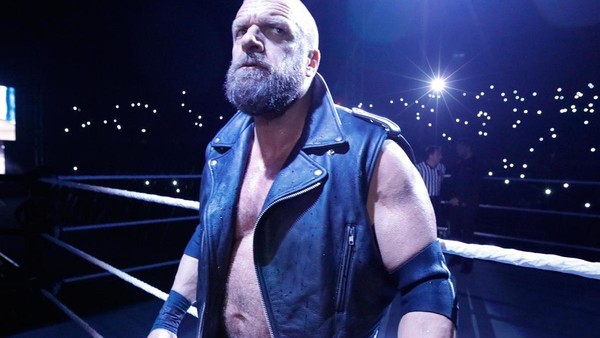10 Reasons Why WWE Fans Are Sick Of Nostalgia
It's time to graduate from old school.

Nostalgia is a powerful elixir.
Those who grew up on Golden Era WWF are drawn to its blinding technicolour, stars gigantic in both physique and presence, and the sheer wall-to-wall personality from flagship champion to endearing, iconic ring announcer. Every promo cut in front of Mean Gene Okerlund's sky blue background created an unforgettable memory; virtually every match was enthusiastically received, even those worked with the athletic gait of glue factory-bound horse. Presented by great men of gravitas and performed by charismatic legends, at its best, Hulk Hogan's WWF was the joy and optimism of childhood, distilled.
The Attitude Era yielded yet more unforgettable memories; a far more violent and adult product, those who came of age alongside the WWF circa 1998 came equipped with an anthology of schoolyard retorts, anti-authority wish fulfilment fantasies, and fantasises, driven by Sable and Jacqueline, of an altogether less publishable nature.
Travel too far back in that wanderlust haze, though, and it obscures itself. As Thomas Wolfe wrote, you can't go home again. Quite quickly, the ten turnbuckle punches and basic '80s slams make you long for today's awesome in-ring vintage. The crude antics of the New Age Outlaws read far more douchey than "edgy".
The problem, in 2018, is that WWE is intent on going back home, again and again...
10. Shameless Shane

Shane McMahon is (or was) beloved because he once grasped his character brilliantly.
A spoiled rich kid with a bristling over-enthusiasm - of course this silver spoon-fed heir to a monarchy would act like a complete brat, with sheer entitlement acting as a toddler's sugar rush - Shane was a classic love-to-hate figure who fell from lunatic heights to reward the audience he antagonised with such aplomb.
Even as a face, Shane wrestled as a limited non-wrestler, infamously matching guts with Kurt Angle's technical glory in a superb story-driven match at King Of The Ring 2001. But the Shane McMahon we see in 2018 is not the same Shane McMahon we remember from 1999. Somehow, in the intervening decade and a half, Shane has evolved from scrapper to scientific genius. He must have spent his WWE hiatus in the New Japan dojo; that might explain his sudden ability to wrestle AJ Styles as if he, too, was a technical wizard.
Shane is nostalgia for nostalgia's sake - Member Berries with an acidic aftertaste spoiled through ego. It feels at times as if we're meant to receive Shane as a popular figure simply because he performed in a more popular era. He is catered to the rose-tinted "Bring back the Attitude Era" apologists but, if the deathly Survivor Series silence suggests anything, they are decreasing in number and voice.